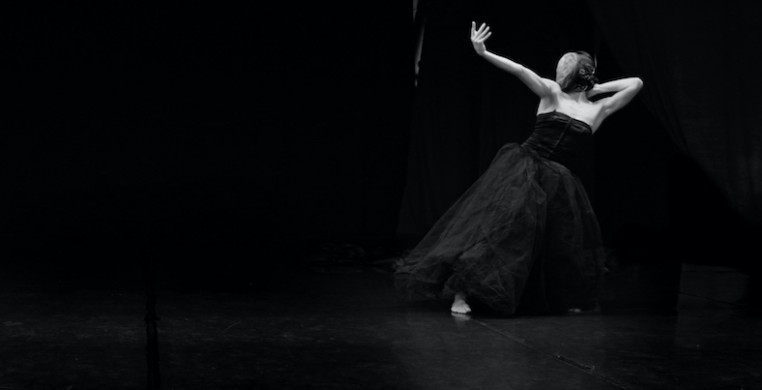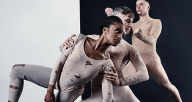I started listening to Phish again.
Phish was the first “cool” band I listened to. I grew up on classical and classic rock, feeling the equivalent weight and cultural relevance of Beethoven and the Beatles. It wasn’t until I started listening to Phish in high school that those two sonic worlds magically collided. I was totally hooked. Bad pun.
Early into the stay at home order—before the novelty wore off and staying at home became a new kind of status quo—I came across a piece in the LA Times about deep listening. What better time to dig out a dusty LP or CD, lay on the floor, close your eyes and listen to it all the way through? I honestly couldn’t remember the last time I did that. It was a hallmark of my adolescence. A way of sorting through my little world and figuring myself out.
As the number of summer days dwindle I find myself reflecting on a very strange season, a series of muddy weeks and months that was somehow equally hectic and lackadaisical. Revisiting musical haunts has become the anchor of my Friday nights—nights which, for the better portion of a decade, have typically been spent at a dance performance.
I’ve been thinking about why I might choose to go back to albums I’ve heard hundreds of times, instead of trying something new. In 2018, New York Times columnist Seth Stephens-Davidowitz ran some numbers from Spotify and determined that our musical tastes tend to peak in our early to mid-teens. Those favorites, engrained in our young hearts and minds, remain favorites into adulthood.
Why is that? Wistful nostalgia? Recollections about “better,” “simpler” times? For some, high school is poetic; for others, it’s awful—something that must be endured and survived. Why stay loyal to music that reminds you of something so unpleasant?
Stephens-Davidowitz does not opine on that, nor do his own musical tastes follow the patterns he found. I can’t explain why I’m drawn to ‘90s jam bands right now and not to on-demand reruns of dance shows I’ve already seen.
I’ve seen Alvin Ailey’s “Revelations” at least 50 times and I’ll watch it 50 more. I’ve watched or performed in hundreds of “Nutcrackers." Believe it or not, I’m not tired of it. Both of these things came into my life around the same time as Phish. But I can barely muster a shrug emoji at the thought of watching last year’s “Nutcracker” on my laptop this winter.
I know. I’ve spent valuable real estate here on See Chicago Dance complaining about ill-fated Zoom dances and now I’m shunning reusable content, too—both perfectly reasonable methods of pivoting and keeping dance in the public eye.
Let me be clear: I think there’s an audience for dancing in parking lots and in Zoom rooms. I also think there’s an audience that will be poked by nostalgia as companies repurpose and recycle archival footage. For me, the question is whether dance can find another way forward.
A potential sweet spot could be this year’s exciting cohort of 2020 Chicago Dancemakers Forum (CDF) lab artists, whose ideas and inspirations were fully-baked before mask wearing was a thing. And even in this time of scarcity, CDF’s packages are beefier than ever. Lab artists receive a $20,000 injection of cash and resources from key institutional partners to support their year-long choreographic endeavors.
Awards given to Bril Barrett, Erin Kilmurray and Christopher Knowlton felt like a long time coming, with each continuing to pursue their durational choreographic interests. Barrett’s two-decade tenure as the leader of M.A.D.D. Rhythms (and even longer history embedded in Chicago’s rhythm tap scene) catalyze a largely improvisational exploration of tap dance's origins. Kilmurray and Knowlton, each active for the last decade or so, lean into their split personalities—Kilmurray as producer of the wildly popular burlesque cabaret The Fly Honey Show and Knowlton as a bioengineer doing motion capture research at Rush University—as the basis for their projects.
Two artists, Sterling “Steelo” Lofton and Christopher “Mad Dog” Thomas add to the growing number of CDF awardees specializing in Chicago-style footworking. Steelo is specifically looking at how fashion influences historically Black dance forms, and vice-versa, starting with a deep dive into the Stony Island Arts Bank’s archives. Mad Dog will draw from his personal history growing up in the Altgeld Gardens housing project—where he and his family were exposed to toxic pollutants resulting in chronic respiratory problems—as he seeks to unpack and codify his personal footworking style.
Rounding out the 2020 roster is Irene Hsaio, who doesn’t appear to be taking a break from penning commentary at the Chicago Reader even as she embarks on a solo process continuing her deep exploration of Asian cultural representations in dance.
Hsaio has previously performed with and for Nejla Yatkin, another perennial soloist whose artistic partnership with photographer and videographer Enki Andrews bodes well for remote audiences. Not to mention, Yatkin’s affinity for dancing outside and engaging with Chicago’s natural landscapes have, over the past year, gathered adventuresome audiences at Burnham Wildlife Corridor and pond-side in Lincoln and Palmisano Parks.
Yatkin will venture indoors this fall for her latest project, “The Other Witch.” In this new dance film, Yatkin reimagines Mary Wigman’s “Hexentanz.” The iconic 1914 solo—one of only a handful of Wigman’s works captured on film—is the epitome of abstract expressionism. Wigman’s aesthetic was imported from Germany (where Yatkin spent much of her life) to the United States by Hanya Holm. Holm is considered one of the pillars of American modern dance.
The film, screening Oct. 23, is part of the Dance Center’s 2020-21 season, which was scrapped and re-imagined before it was even announced. Under presenting series director Ellen Chenoweth, the Dance Center has worked toward a renewed investment in local artists, though Chenoweth’s first full season last year still largely featured out-of-towners. That’s always been the point at the Dance Center. By design, the presenting series is meant to showcase the world’s best contemporary dance, thusly introducing dance majors at Columbia College, which houses the Dance Center, to a cornucopia of styles and aesthetics that can’t be seen elsewhere in Chicago.
But with ongoing travel restrictions and strict regulations imposed on public gathering, touring is next to impossible. So, the Dance Center is refocusing on Chicago artists by sponsoring production residencies and a series of master classes available to the public taught by CDF and Dance Center alumni.
Case in point: Nov. 7, Jumaane Taylor (a 2017 lab artist) will present sections of a new work called “Ugly Flavors,” livestreamed from the Dance Center with The Jazz Hoofing Quartet. Taylor, an alum of the Sammy Dyer School of the Theatre, is an extraordinary hoofer. He began to really embrace working with live musicians in 2006. In 2015, with his evening-length homage to John Coltrane’s “A Love Supreme,” Taylor emerged as a choreographer to watch. For “Ugly Flavors,” Taylor looks to two tracks known for their dissonance: “The Shape of Jazz to Come” by Ornette Coleman and Igor Stravinsky’s “The Rite of Spring,” a notorious symphonic work whose accompanying dance by Vaslav Nijinsky invoked a near-riot. Taylor’s unparalleled ability to deconstruct and reconstruct complicated layers of rhythm—his sense of calm amid cacophony—to this critic, is the opposite of ugly. It’s just what dance needs right now.



